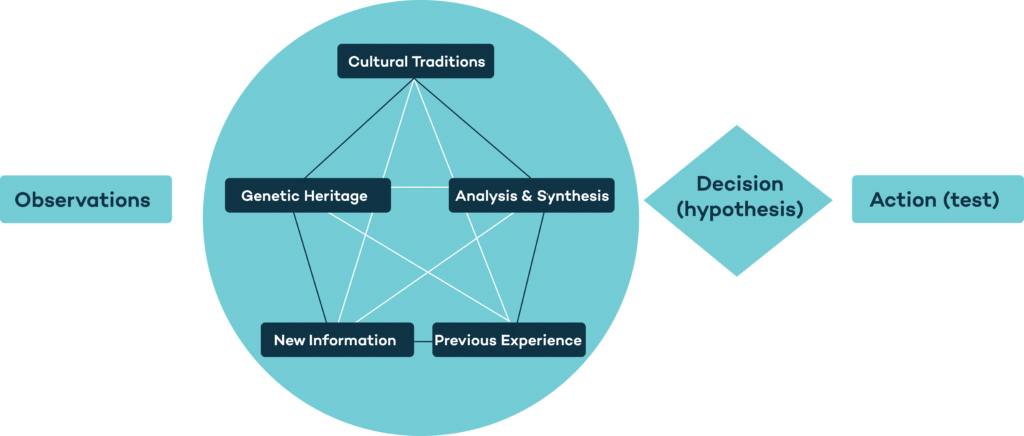Observation Inspiration from the US Airforce

Introduction
The OODA loop or the ‘Boyd Cycle’ is a closed loop which was created by US Airforce Pilot John Boyd. The cycle is divided into 4 key pillars, observation, orientation, decision and action. The cycle was developed by the military strategist to assist and support decision making in rapidly changing environments. In most Action Learning Cycles (ALC), actions upon reflection synthesize learning. The ALC is reminiscent of the scientific method hypothesis testing where a hypothesis is developed, tested and serves to inform future studies or cycles. Although it was originally developed as a 4-step loop Boyd highlighted the importance of acknowledging that the loop was susceptible to be influenced by external factors outside of its control, illustrating the importance of orientation & decision in the overall loop.

The application of the OODA loop can play an integral role in gaining competitive advantage, particularly in the context of businesses operating within the same market. When facing competition, the OODA loop requires organisations to firstly observe their opponent considering all external and internal factors unfolding within the surrounding environment which might influence their decision. This informs the orienting phase of the loop in which the organisation must narrow down the number of strategic options which could be implemented to overcome their opponent. Finally, once the most suitable strategy has been selected it can then be implemented and actioned. The OODA loop is not just about getting ahead of the opponent, it is about getting inside the opponent’s loop and understanding what their weaknesses are.
How can Organisations Draw on the OODA Loop in Practice
Transform HR
- By redefining the role of the HR department organisations can focus on creating a progressive culture and enhancing their strategic agility.
- Consider recruiting employees from line management and designating them with HR duties to integrate practical insights into cultural development.
Develop an Operations Manual
- Write and continuously update their operations manual that serves as a guide for the standard and quality of work and mindset within the organisation. This manual should encourage creativity and initiative while providing a framework for consistent productivity, quality, and safety.
- Treat the manual as a living document that evolves with the organisation, incorporating contributions from employees to ensure it remains relevant and effective.
Foster a Creative Organisational Climate
- Implement regular brainstorming sessions and cross-functional teams to foster creativity and build an environment which nourishes collaboration & creativity.
Encourage Continuous Improvement
- Adopt the principles of continuous improvement to create a work environment where employees are motivated to actively reflect on their roles and participate in managing their own jobs.
- Implement formal processes for observation, analysis, and testing for changes in work processes
Apply Customer Feedback
- Regularly assess alignment with customer preferences through surveys and market research, using customer feedback to refine the organisational strategy
Conclusion
By implementing these strategies, organisations can enhance their ability to use the OODA loop effectively, ensuring strategic alignment, and resilience in the face of challenges. The OODA loop highlights the importance of strategy in any work environment where there is competition and an opportunity to gain a cutting edge ahead of competition. This article explored the structure and execution of the loop whilst highlighting how it might be employed by organisations to enhance operational efficiency and foster a culture of innovation and continuous improvement.
More on Feedback
Refining Performance Assessments: Reducing Recency Bias for Superior Evaluations
Lars Schmidt: Redefining HR and Empowering the Next Generation of People Leaders – Podcast
Sources
https://thedecisionlab.com/reference-guide/computer-science/the-ooda-loop
https://psychsafety.co.uk/john-boyd-and-the-ooda-loop/
https://fhs.brage.unit.no/fhs-xmlui/bitstream/handle/11250/2683228/Boyds%20OODA%20Loop%20Necesse%20vol%205%20nr%201.pdf?sequence=1&isAllowed=y